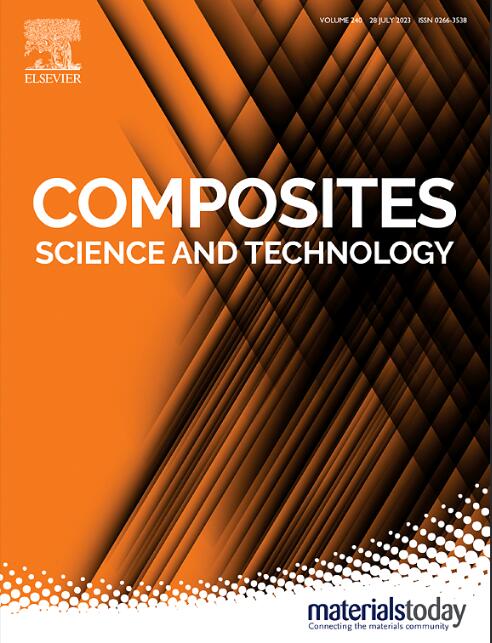Flexural properties of sandwich panels fabricated by filament-extrusion of high-temperature thermoplastic composites
IF 8.3
1区 材料科学
Q1 MATERIALS SCIENCE, COMPOSITES
引用次数: 0
Abstract
This study investigated the flexural properties of sandwich panel structures fabricated by the filament-extrusion 3D printing technology using novel high-temperature thermoplastic polymer composites of polyetherimide (PEI) and polyphenylene sulfide (PPS). Various formulations of PEI and PPS composites, combined with recycled carbon fiber (rCF) and thermal black (TB) particles, were manufactured. The flexural properties were assessed through a three-point bending test, comparing the performance of sandwich panels printed with these filaments and those printed with commercially available filaments. Dimensional accuracy was evaluated using a 3D scanner, revealing that 90 % of scanned points deviated a maximum of 0.2 mm from the CAD model. X-ray micro-tomography measured porosity, finding up to ∼12 % in PEI and ∼8 % in PPS skins. The microstructural analysis of the composites revealed a level of adhesion deemed acceptable between successive layers of printed parts and adequate dimensional accuracy. A digital image correlation (DIC) system assessed full-field strain and crack propagation during flexural testing, showing crack initiation due to strain concentration in the core region, consistent across all specimens. The sandwich panels printed with developed filaments exhibited comparable flexural properties to that of panels printed with commercial filaments, with a bending load capacity of up to 3.0 kN for approximately 50 g specimens. The printing quality and mechanical performance of the novel PEI and PPS composite formulations demonstrated in this study suggested that they could serve as viable alternatives to commercial filaments.

求助全文
约1分钟内获得全文
求助全文
来源期刊

Composites Science and Technology
工程技术-材料科学:复合
CiteScore
16.20
自引率
9.90%
发文量
611
审稿时长
33 days
期刊介绍:
Composites Science and Technology publishes refereed original articles on the fundamental and applied science of engineering composites. The focus of this journal is on polymeric matrix composites with reinforcements/fillers ranging from nano- to macro-scale. CSTE encourages manuscripts reporting unique, innovative contributions to the physics, chemistry, materials science and applied mechanics aspects of advanced composites.
Besides traditional fiber reinforced composites, novel composites with significant potential for engineering applications are encouraged.
 求助内容:
求助内容: 应助结果提醒方式:
应助结果提醒方式:


